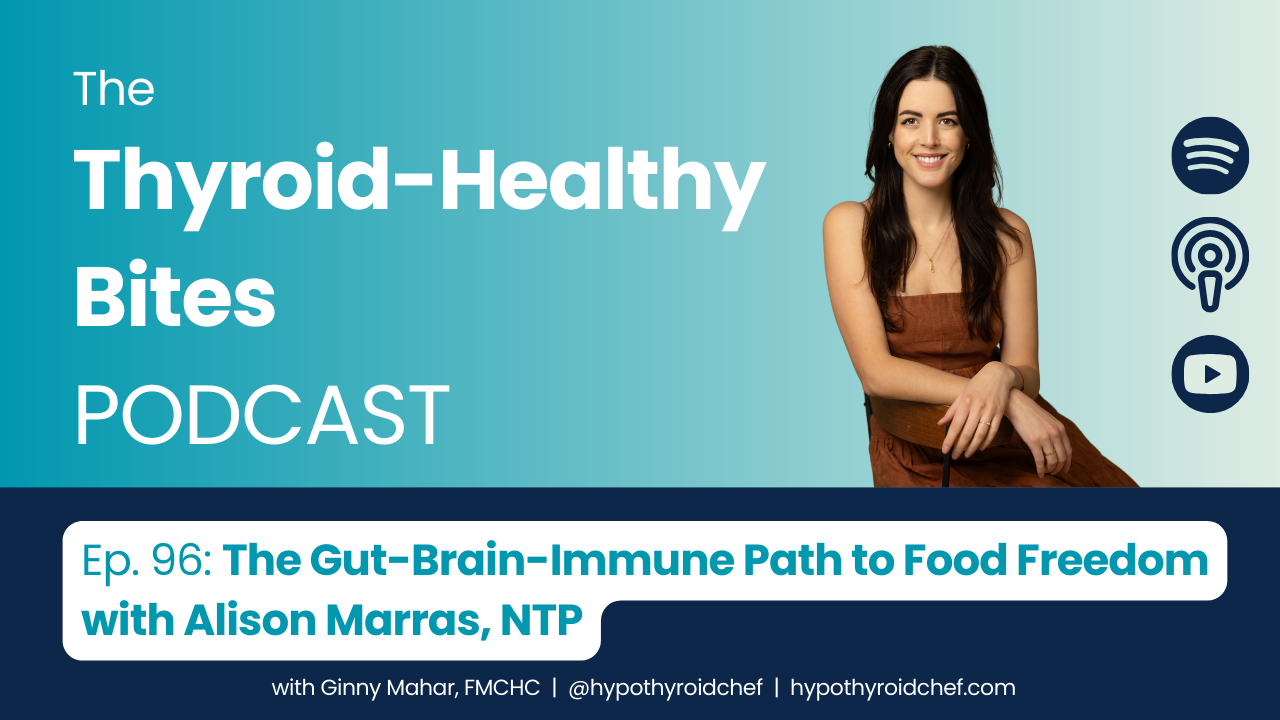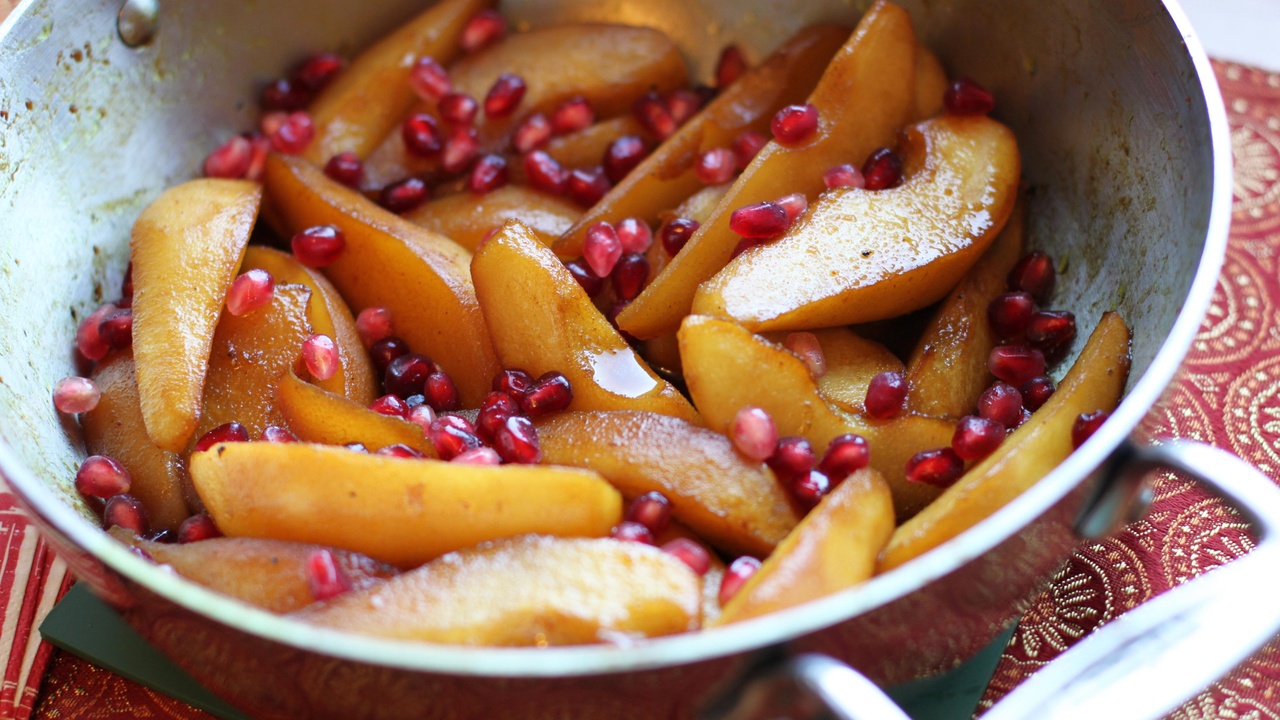Horchata Chia Pudding

If you've ever had good Horchata, the sweet, creamy, cinnamon-spiked rice beverage from Mexico, then you know how irresistible this flavor combo is. This Horchata Chia Pudding takes its flavor cues from traditional ingredients like coconut, almond, and cinnamon while leaving out the rice, dairy milk, and sugar.
For extra nutritional bonus points, this sugar-free chia pudding will provide you with a significant dose of fiber and Omega-3 fats, and even some complete plant-based protein. Best of all it comes together in just a few minutes and provides 4 glorious servings of thyroid-healthy breakfast!
Many of us Thyroid Thrivers have found that cutting out things like gluten, dairy, and sugar can help us lower inflammation, reduce bloat, increase energy, improve digestion, and even lower our thyroid antibodies. But when it comes to breakfast time, these dietary restrictions can throw us for a loop. Suddenly, many traditional breakfast foods are all off the table. Lucky for us, this breakfast-friendly recipe happens to be gluten-free, dairy-free, Paleo, low-carb, and vegan.
Full disclosure: Some of the links in this post may be affiliate links. As an Amazon Associate, I earn from qualifying purchases. Purchasing a product using one of these links will support my work at no additional cost to you. Please know that I only recommend products I wholeheartedly stand by.
Chef's Notes:
There are many variations of Horchata. I studied several recipes and then pulled together the most enticing traditional ingredients that add both flavor and natural sweetness without a lot of added sugar: Creamy light coconut milk, aromatic almond extract, ground cinnamon (a must), and a touch of Stevia to make it pop.
In many applications, Stevia can be a bit overpowering, but I find it works well in chia pudding. I made a point to use the smallest amount needed to bring these flavors together. It's barely noticeable in the finished product, but if you don't like Stevia, you can always substitute a touch of maple syrup.
While maple syrup is high in sugar and should be consumed in limited amounts, it does have the added benefit over regular sugar of providing several antioxidants and other beneficial micronutrients. Just know that replacing the Stevia with maple syrup will increase the sugar content (7 g sugar per serving if you use the recommended 2 tbsp. maple syrup).
Cinnamon, which is the key flavor in Horchata, can be an especially helpful spice for those looking to reduce their sugar consumption. Not only does the flavor of cinnamon add and amplify sweetness without added sugar, but cinnamon has also been shown to reduce blood sugar and increase insulin sensitivity. Ceylon cinnamon seems to be the better health choice over the more commonly found Cassia cinnamon, due to higher antioxidants and less of a naturally-occurring toxin found in cinnamon, called coumarin. In small amounts, don't sweat it too much if you can't find Ceylon, but if you eat a lot of cinnamon, it's worth making the switch.

Is Chia a Good Ch-ch-ch- Choice for Thyroid Thrivers?
It's true that the same tiny seeds used to grow our beloved Chia Pets are the same as those now regarded as a superfood. So, what's all the hype about, and do chia seeds have a place in your thyroid-healthy diet?
Several of the most outstanding nutritional qualities of chia seeds can also be helpful in addressing common thyroid symptoms and supporting our overall health and vitality. Let's take a closer look...
Chia is high in fiber: Just one ounce of chia seeds (about 2 tbsp.) provides 11 grams of fiber. Getting enough fiber in our diets (which most of us don't) is a great way to support your gut health and digestion. This can help relieve constipation and other gut-health issues like slow gut motility and gut dysbiosis, commonly associated with hypothyroidism and Hashimoto's.
Because fiber also helps us feel full, it can support our efforts to shed excess weight-- a common frustration for Thyroid Thrivers. Finally, the fiber in chia seeds may help us maintain a healthy blood sugar balance and animal studies have shown that chia seeds may improve insulin sensitivity.
Note: According to thyroid expert and patient advocate Mary Shomon, it's important to take your thyroid medication at least an hour before high-fiber foods and supplements, as fiber can decrease your body's absorption of thyroid medication. There's no need to avoid fiber altogether, but if you shift from a low-fiber to a high-fiber diet, you may need to monitor your thyroid function for a possible change in medication dosage.
Chia is high in Omega-3s: Just one ounce of chia seeds (about 2 tbsp.) provides over 5,000 mg of Omega-3, which far surpasses the recommended daily intake of at least 1,200 mg. Omega-3s are one of the best fats we can consume to reduce inflammation throughout the body.
High inflammation, according to Dr. Amy Myers, can aggravate the autoimmune response and contribute to an increase in thyroid antibodies. She adds that most of us are deficient in Omega-3s. Also, most of us consume far too many Omega-6 fats in the highly-processed standard American diet. Consuming too high of a ratio of Omega-6s to Omega-3s (as many do) can contribute to inflammation and serious disease.
Chia provides a complete source of protein: Chia seeds contain all nine essential amino acids, meaning the body can utilize the protein they provide to build muscle. That said, it's important to keep in mind that it's difficult to get the amount of protein we need from a typical serving of chia pudding. 1 ounce (about 2 tbsp.) of chia seeds provides about 5 grams of protein. Getting enough protein to build and maintain muscle mass, in combination with strength training, can help combat hypothyroid myopathy which is characterized by muscle weakness and experienced by 30% - 80% of hypothyroid patients.
Strength training and a focus on building and maintaining muscle is a major focus of the fitness experts featured in my Thyroid-friendly Workout Kit. While this chia pudding on its own does not provide adequate protein to build and maintain muscle mass (approx. 30 grams per meal according to women's fitness expert, Debra Atkinson), it can be served alongside other sources of protein like this AIP Lamb Sausage as part of a protein-rich breakfast.
Further Reading: Top 5 Thyroid-friendly Exercise Tips
Chia is loaded with antioxidants: Chia seeds are an excellent source of several antioxidants including quercetin, caffeic acid, chlorogenic acid, kaempferol, and myricetin. Antioxidants provide a myriad of health benefits and cancer-preventive benefits within the body. Antioxidants also help prevent chia seeds from going rancid, making them highly shelf-stable.
Chia contains several key thyroid-supporting nutrients: In addition to the beneficial macro-nutrients listed above (i.e. protein, fiber, and healthy fats), chia seeds are a significant source of several micronutrients that are beneficial to Thyroid Thrivers. A 1-ounce serving of chia seeds (about 2 tbsp.) contains 12% of the DV of Iron, 12% of the DV of zinc, 15% of the DV of thiamine, 16% of the DV of niacin, and 23% of the DV of magnesium.
In conclusion, Chia seeds can be a wonderful, nutrient-dense, gut-health supportive, and anti-inflammatory addition to a thyroid-healthy diet, as long as you can tolerate seeds, and aren't currently on a strict healing diet like the Autoimmune Protocol (AIP). Seeds of any kind are not allowed during the elimination phase of the AIP.

How to Eat Chia Seeds
These tiny seeds native to Mexico and Guatemala can be eaten dried, but soaking them in some sort of liquid is nutritionally ideal according to experts, and can help avoid unwanted GI distress and dehydration. When added to liquid, and soaked for at least 30 minutes, chia seeds form a gel-like coating. It's quite remarkable to observe and they can even be used to create a viscous egg substitute that can be used in baking.
Soaking chia seeds not only adds water and bulk, improving satiety when eaten, but it also unlocks enzyme inhibitors within the seed. This, in turn, makes the amazing nutrients in the chia seeds easier for your body to absorb and digest.
This Horchata Chia Pudding recipe takes care of that soaking step for easier digestibility and bioavailability of nutrients. Leaving the seeds in coconut milk for a few hours also creates a thick, spoonable mixture that makes enjoyable fare for the first meal of the day.
Chia seeds have a mild and fairly neutral flavor, making chia pudding quite palatable. It's possible to make a similar pudding with ground flax seeds-- another wonderful source of healthy Omega-3 fats-- but the flavor of flax is more assertive. I've experimented with both and definitely prefer chia pudding over flax pudding.
Chia pudding is, of course, rather gelatinous so if you're texture-averse that can take a little getting used to. Adding other nutrient-dense whole food toppings like fresh berries, nuts, cacao nibs, or shredded coconut not only complements the flavor of chia pudding but can add a welcome textural element to the gelled chia seeds.
On the Menu: Citrus Chia Fresca
Thyroid-healthy Recipe Highlights:
- Chia Seeds: Chia seeds are an incredibly nutrient-dense food providing several benefits for Thyroid Thrivers. They are high in antioxidants and key thyroid-supporting nutrients like magnesium, zinc, iron, and B vitamins. A 1-ounce serving of chia seeds (about 2 tbsp.) contains 11 grams of fiber, 5 grams of complete protein, and over 5,000 mg of anti-inflammatory Omega 3s.
- Coconut Milk: Coconut products such as coconut milk contain a wide array of vitamins and minerals, in addition to healthy fats known as MCTs (medium-chain triglycerides) or MCFAs (medium-chain fatty acids). Consumption of these fats has been touted for various health benefits such as brain health, weight loss, and cholesterol balance. Coconut can also be a positive dietary substitution for refined carbs and sugar, which can diminish thyroid and overall health. NOTE: Full-fat coconut milk does contain an incredibly high amount of fat (approx. 45g per can) so for those watching their weight, using light coconut milk may be a better alternative.
- Cinnamon: In addition to adding a dose of sugar-free sweetness to recipes, cinnamon is one of the highest antioxidant spices around. Cinnamon has also been shown to reduce blood sugar and increase insulin sensitivity. Ceylon cinnamon seems to be the better health choice over the more commonly found Cassia cinnamon, due to a higher amount of antioxidants and less of a naturally-occurring toxin called coumarin.
Happy cooking, happy thriving, and enjoy the recipe (below)!

P.S. If you're anything like me, when I started down the path of thyroid-healthy eating I had questions-- lots of them. What I didn't have was a step-by-step system, to get me where I wanted to go. I wasted a lot of time piecing together bits of information about what to eat, what to avoid, and HOW to make thyroid-healthy dietary changes. That’s why I created the Thyroid-healthy Meal Plan Kickstart. Ready to take YOUR healing journey farther, FASTER? Let’s do it. Learn more HERE.
More Thyroid-Healthy Breakfast Recipes:
- Coconut Macadamia Granola
- AIP Tiger Nut Smoothie Bowl
- AIP Zucchini Basil Breakfast Soup
- AIP Lamb Hash with Carrot and Celery Root
- Hearty AIP Breakfast Bowl
- Banana Orange Creamsicle Collagen Smoothie
Subscribe to my free newsletter for fresh recipes & lifestyle tips, delivered weekly, and receive a free gift!
By submitting this form, you agree to receive ongoing updates from Hypothyroid Chef










